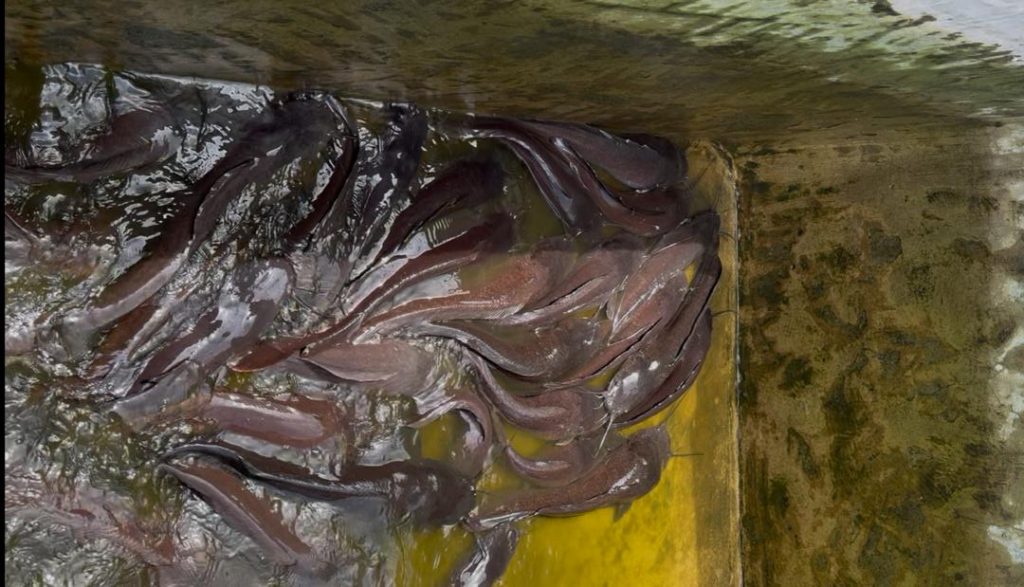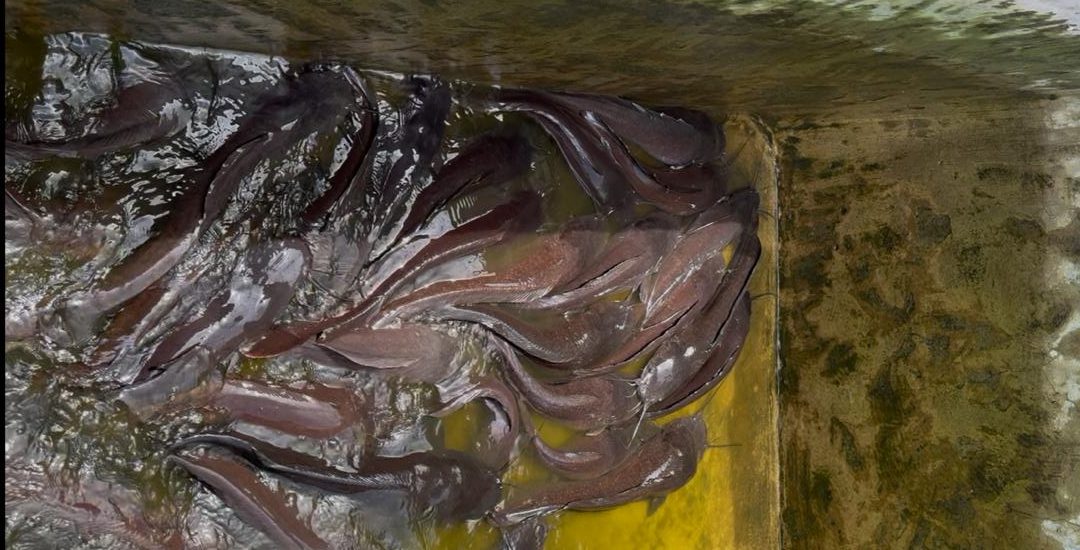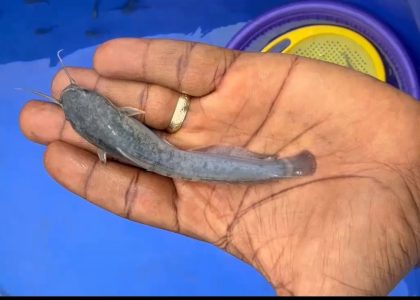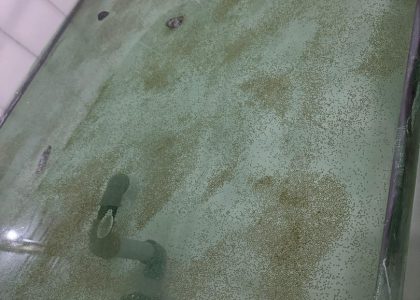
Catfish farming has become one of the fastest-growing agribusinesses in Nigeria and across Africa, providing food security and income for thousands of farmers. However, the profitability of catfish farming depends heavily on the quality of fingerlings produced in hatcheries. And at the heart of fingerling production lies one key factor: the broodstock.
Healthy broodstock produce strong, fast-growing fingerlings with high survival rates. On the other hand, weak or poorly managed broodstock often result in stunted growth, deformities, and high mortality in hatcheries. This makes broodstock selection and management one of the most critical stages in aquaculture.
What is Broodstock in Catfish Farming?
Broodstock are the mature male and female catfish selected for breeding. They serve as the parent fish whose eggs and sperm (milt) are used to produce fingerlings. Because they pass on their traits to their offspring, the choice of broodstock determines the growth rate, survival, and overall performance of future catfish generations.
Importance of Proper Broodstock Selection
Many farmers underestimate broodstock selection, but it plays a direct role in hatchery success. Using poorly selected broodstock can lead to:
-
- Low fertility: When broodstock are not properly selected or managed, the eggs may fail to fertilize, or the sperm may be weak and unable to penetrate the eggs. This reduces the overall number of viable embryos and leads to wasted breeding efforts.
-
- Poor hatchability: Even when fertilization occurs, poor water quality, incorrect temperature, or inadequate incubation techniques can result in reduced hatchability. This means that fewer eggs develop into healthy fry, limiting the potential for large-scale production.
-
- Weak offspring: Fry and fingerlings that do hatch may be weak, deformed, or have low immunity if broodstock quality is poor or environmental conditions are substandard. Such offspring are more prone to diseases, stunted growth, and higher mortality rates, which can compromise the success of the hatchery.
-
- Financial loss: All these challenges translate to significant economic setbacks. Farmers spend money on broodstock, feeds, hatchery management, and utilities, but with low survival and weak growth rates, the returns on investment are minimal. In severe cases, this can discourage farmers, disrupt production schedules, and reduce market supply.
Age and Weight Requirements for Catfish Broodstock
The ideal broodstock should be:
1. Age
Between 1.5 to 2 years. At this stage, catfish are considered sexually mature and capable of producing viable eggs and sperm in good quantity. Fish that are too young often have underdeveloped gonads, leading to poor fertility and low hatchability. On the other hand, broodstock that are too old may suffer from reduced fertility, weak gametes, or irregular spawning cycles, all of which negatively affect breeding performance.
2. Weight
Maintaining these weight ranges (Males: 0.8–1.5 kg and Females: 1.2–2 kg) is crucial for efficient reproduction. Males within this weight bracket produce enough milt (sperm) of good quality for fertilization, while females produce eggs in large, healthy clusters that are easier to strip and incubate. Underweight fish often lack the energy reserves needed for spawning, while overweight fish may have difficulty releasing eggs or milt, leading to unsuccessful breeding attempts.
3. Body Condition
Ideal broodstock should be strong, active, and free from deformities, injuries, or visible signs of disease. Fish with smooth, unbroken skin and well-developed fins are preferred, as they are more likely to produce healthy offspring.
4. Feeding History
Broodstock should be raised on a high-quality, protein-rich diet supplemented with vitamins and minerals. Proper feeding enhances gonad development, improves fertility, and increases egg viability. Malnourished broodstock tend to produce weak or fewer offspring.
5. Genetic Quality
Selecting broodstock from diverse genetic lines helps reduce inbreeding, which can cause stunted growth, deformities, or poor survival rates in fingerlings. Broodstock from fast-growing and disease-resistant strains are highly desirable in commercial hatcheries.
6. Health Status
Only broodstock free from parasites and infections should be used. Routine health checks and quarantine practices are essential to prevent disease transmission to eggs and fry.
Health and Physical Characteristics of Quality Broodstock
When selecting broodstock, health is just as important as age and weight, as it directly determines the quality and survival of the offspring. Farmers should carefully observe the following characteristics:
1. Regular feeding response: Healthy broodstock eagerly respond to feed, showing good appetite. Poor or irregular feeding behavior is often linked to stress or illness.
2. Active behavior: Healthy broodstock swim actively, respond quickly to movement, and do not remain sluggish at the bottom of the tank. Lethargic fish may indicate underlying health problems.
3. Disease-free body: A healthy broodstock should have smooth skin without lesions, sores, ulcers, or visible parasites. Any sign of fungal growth, white patches, or abnormal mucus is a red flag.
4. Good body shape: Avoid broodstock with deformities, damaged fins, or stunted growth. Proper body conformation ensures better performance during spawning and reduces the chances of passing genetic deformities to fingerlings.
5. Females with abdominal swelling: This is a positive indicator that the ovaries are well-developed and filled with mature eggs which makes them ready for induced breeding.
6. Bright coloration and clear eyes: Clear, bright eyes and vibrant body coloration are strong indicators of general good health and vitality. Cloudy eyes or dull skin tones often signal stress or infection.
7. No history of disease outbreaks: Whenever possible, choose broodstock from hatcheries or farms with a clean health record. Fish exposed to repeated infections may carry latent pathogens.
Broodstock Management Practices
Selecting broodstock is only the first step. Farmers must manage them carefully to ensure they remain healthy and productive.
1. Housing and Pond/Tank Conditions
Broodstock should be kept in clean, well-aerated tanks or ponds designed to minimize stress and provide optimal breeding conditions. Good housing not only reduces stress and prevents mortality but also ensures that fish reach their full reproductive potential.
-
- Aeration: Oxygen is critical for broodstock health and gonad development. Proper aeration using air pumps, diffusers, or paddle wheels should be maintained, especially at night when oxygen levels drop.
-
- Stocking Density: Avoid overcrowding, as it stresses the fish, weakens their immune system, and reduces fertility. A density of 2–3 fish per square meter is often recommended for broodstock.
-
- Water Parameters:
-
- Temperature: 26–30°C – Optimal for reproductive activity.
-
- pH: 6.5–7.5 – Ensures proper enzymatic and metabolic activity.
-
- Dissolved Oxygen: At least 5 mg/L – Low oxygen can lead to poor egg quality and broodstock mortality.
-
- Ammonia: Below 0.02 mg/L – Even small amounts can damage gills and reduce fertility.
-
- Water Parameters:
Regular monitoring of water quality is essential, as even minor fluctuations can significantly affect breeding performance. Farmers should invest in water testing kits and conduct checks at least twice weekly. Installing filtration systems (biological and mechanical) further maintains stable water conditions.
2. Feeding and Nutrition
Broodstock require high-quality diets to remain fertile and produce viable eggs and sperm. Nutrition directly influences egg size, sperm motility, and overall breeding success.
-
- Protein Content: Feed should contain 35–45% protein to support gonadal development and reproductive efficiency.
-
- Feed Types: Diets can include formulated floating pellets, live feed (such as earthworms, tadpoles, small fish, or insect larvae), or a balanced mix of both.
-
- Supplementary Feeding: Adding vitamins and minerals—especially vitamin C (immunity boost), vitamin E (egg quality), and essential fatty acids improves overall reproductive performance.
-
- Feeding Frequency: Broodstock should be fed twice daily, preferably in the morning and evening. Avoid overfeeding. It causes obesity, fatty liver, or fatty deposits in the ovaries, which reduce egg fertility and increase mortality during breeding
3. Stress Reduction
Stress is one of the biggest silent killers of broodstock fertility. It triggers hormonal imbalances that delay or prevent gonad maturation.
-
- Avoid frequent handling of broodstock unless necessary.
-
- Handle fish gently with soft nets to prevent bruising or scale loss.
-
- Always ensure stable water quality and avoid sudden changes in temperature, pH, or dissolved oxygen.
-
- Protect ponds/tanks from loud noises, predators (birds, snakes, frogs), and human disturbances, as these can cause panic and injury.
4. Broodstock Rotation
Continuous use of the same broodstock leads to reduced fertility, poor hatchability, and inbreeding depression. Farmers should rotate broodstock regularly to maintain vigor and genetic diversity.
-
- Introduce new, healthy fish into the breeding cycle after 2–3 spawning seasons.
-
- Avoid breeding siblings or closely related fish to prevent weak offspring.
-
- Maintain separate ponds for males and females when not in active breeding, ensuring they are only paired during the breeding cycle.
-
- Keep proper records of breeding history, parent stock, and spawning performance to track genetic lines and avoid inbreeding.
Common Mistakes Farmers Make with Broodstock
Many hatchery failures result from poor broodstock practices. Common mistakes include:
-
- Using broodstock that are too young or too old.
-
- Neglecting to quarantine new broodstock before adding them to the hatchery.
-
- Overfeeding, leading to obesity and reduced fertility.
-
- Keeping broodstock in overcrowded or dirty ponds.
-
- Ignoring regular health checks and water testing.
Benefits of Proper Broodstock Management
When broodstock are carefully selected and managed, farmers enjoy:
-
- Higher fertility rates: More eggs and higher hatchability.
-
- Stronger fingerlings: Healthier offspring with faster growth.
-
- Reduced disease outbreaks: Healthy broodstock produce resistant fingerlings.
-
- Sustainable farming: Continuous supply of quality broodstock ensures long-term productivity.
-
- Increased profitability: Better fingerlings lead to higher sales and returns



